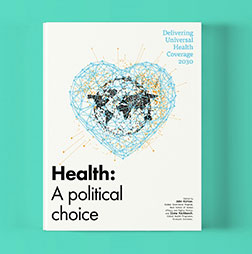G7 performance on development
With five years left to achieve the United Nations’ Sustainable Development Goals, only 17% of the targets are on track or have been met, and more than one third have stagnated or regressed. During the summit at Kananaskis, the G7 leaders’ dedication to the SDGs and development faces heightened scrutiny amid massive budget cuts to foreign aid from the United States and United Kingdom. The Kananaskis Summit offers a critical opportunity for G7 members to demonstrate accountability and reinvigorate global efforts to meet the 2030 Agenda for Sustainable Development, with an initial focus on leveraging their development finance institutions, multilateral development banks and partnerships with the private sector.
Deliberations
Since 1975, G7 leaders have dedicated an average of 17% of the words in their communiqués to development. In 1975, 15% of words were on development. Lows came in 1984 with 3%, in 2003 with 4% and in 2004 with 1%. Highs came in 1979 with 26%, 1994 with 22%, 1996 with 20% and Kananaskis in 2002 with an all-time high of 56%. The 2005 summit had 27%, 2009 had 23% and 2011 had 36%. A sustained sequence of highs began in 2012 with 45% followed by 2013 with 39%, and 2014 with 36%. This then dropped slightly, but remained relatively high at the next four summits, with 38% in 2019. After a steep dip to 2% in 2020 during the Covid-19 pandemic came a rise to 17% in 2021, 18% in 2022, 21% in 2023 and a small dip to 15% at Apulia in 2024.
Decisions
Since 1975, G7 leaders have made 805 commitments on development, the most on any subject, with an average of 16 per summit. Leaders made just four commitments on development in 1975, for 27% of the total. In 1976 they made only one, for 10%. The most development commitments came in 2004 with 53, for 21%. Recently, the G7 made none in 2020, but 15 (4%) in 2021, 14 (3%) in 2022, 29 (4%) in 2023 and 44 (9%) in 2024.
At Canadian-hosted summits, the number of development commitments has generally fallen. The 1981 Ottawa-Montebello Summit produced nine (23%) and the 1988 Toronto Summit five (19%). The 1995 Halifax Summit made 14 (18%) and the 2002 Kananaskis Summit made 34 (19%). The 2010 Muskoka Summit made only four (5%), but the 2018 Charlevoix Summit jumped to 32 (10%).
Delivery
G7 members complied with their leaders’ development commitments on average at 75%, based on 62 commitments between 1996 and 2023 assessed by the G7 Research Group. This is just below the G7’s all-subject average of 77%. G7 development compliance started slowly, with all-time lows of 50% for 1996, 1997 and 1998, but gradually rose, with much variation each year.
Compliance soared to 93% with commitments made at the 1999 summit but plummeted back to 50% for 2000. It again rose to 75% for 2001, declined to 55% for 2002, and then rose to 80% for 2003. After a decline to 75% for 2004, it rose to 85% for 2005 and to 94% for 2006. Compliance then fluctuated between commitments made in 2007 with 65%, and for 2015 in the mid-range with 75%. Then came continued highs: 81% for 2016 and 2017, 92% for Charlevoix in 2018, 84% for 2019, 100% for 2021, and 88% for 2022. Compliance on development for the 2023 summit was 100%. By December 2024, compliance with the 2024 Apulia Summit’s development-related commitment on the Partnership for Global Infrastructure and Investment was already 100%.
Recommendations
Higher development compliance comes from many low-cost actions under the leaders’ direct control. First, commitments that explicitly mention ‘sustainable’ development, including the SDGs, averaged 93% compliance.
Second, commitments that mention ‘development’, including those referring to growth or a specific industry, averaged 90% compliance. So did commitments with a one-year timetable for delivery.
Third, commitments on financing or funding, excluding commitments solely about aid and development assistance, secured 88% compliance.
Fourth, commitments referencing finance ministers had 87% compliance.
Fifth, higher compliance came when G7 development ministers’ meetings were held before the summit. Of the 11 years with such meetings, nine meetings came before the summit, and leaders’ development commitments averaged 81% compliance. The two post-summit meetings averaged only 65%.
Lower rates of compliance come when commitments referred to Africa, debt relief and aid and assistance, at 77%, 75% and 74%, respectively.
Conclusion
Thus, to increase compliance, G7 leaders at the 2025 Kananaskis Summit should:
- Focus on commitments on financing and funding specific to sustainable development initiatives;
- Add short, one-year timetables;
- Connect development and finance commitments;
- Commit to fully implementing the HIPC Initiative and debt relief for highly indebted poor countries; and
- Reinvest in foreign aid, amassing the financial resources required to achieve
the SDGs.












